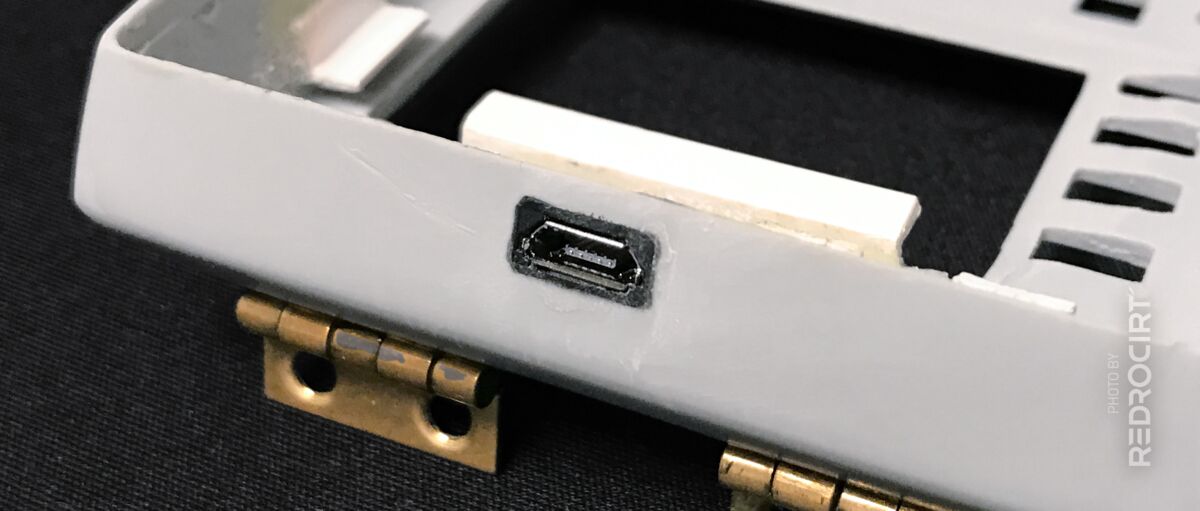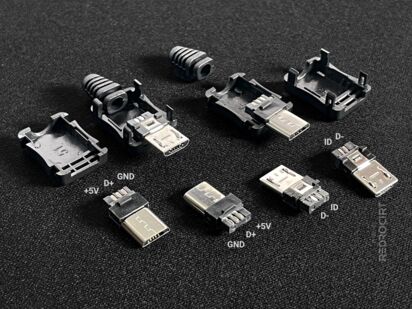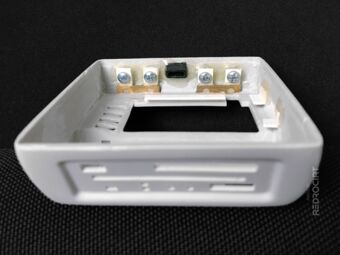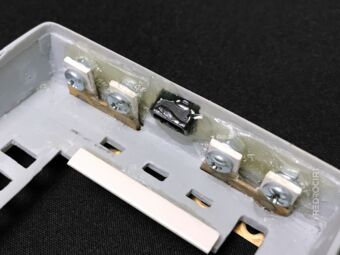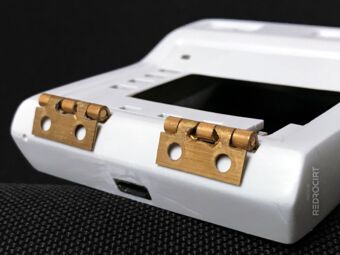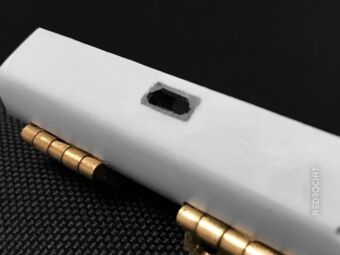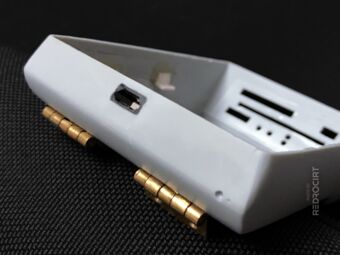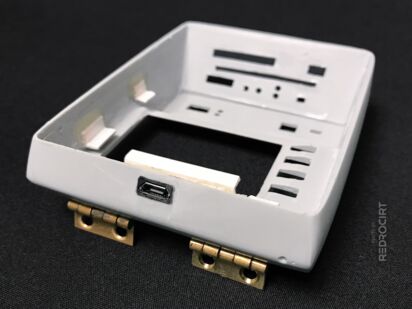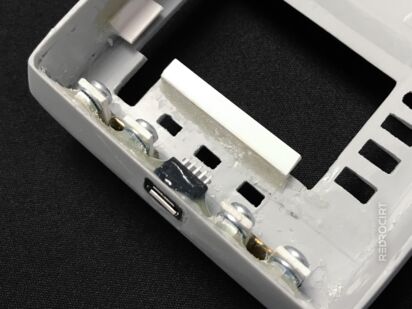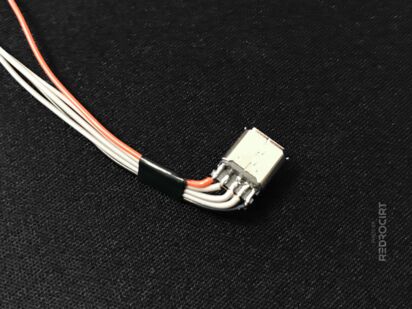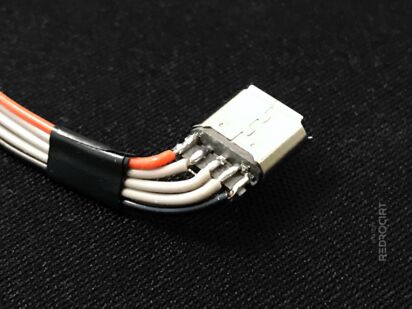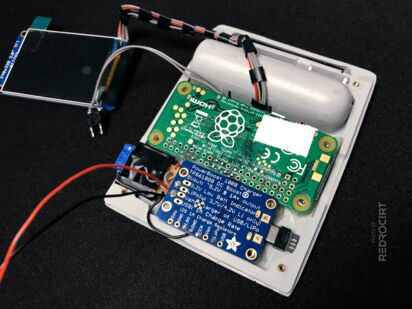To be able to charge the LiPo battery without opening the rear cover (and to optionally use a USB power supply during longer software test phases), I wanted to add a USB socket to the main case. I also wanted to keep the Micro-USB form factor that is already used on the Raspberry Pi and PowerBoost module. Fortunately, there are small USB DIY connectors available.
Install a USB socket in the housing
Section titled Install a USB socket in the housingI drilled a hole in the slanted bottom side of the shell, centered below the hinges, close to the shell's back side, in a 90 degree angle to keep a flat surface. Then I carefully filed the hole rectangular to the size of the plastic housing of the USB socket.
Before I applied the glue I made sure to have the correct rotation for the plastic shell: The socket's solder stripes should be accessible from the maintenance door. I glued the USB housing in place with ultra-strong epoxy and let it dry overnight.
The next day I carefully sanded off the protruding glue on the outside of the USB socket and inserted the metal USB socket. And a couple of days later I soldered flexible, stranded wires to the tiny pins...
Not yet sure about the use of the USB plug
Section titled Not yet sure about the use of the USB plugWith the DIY USB plug I could make a custom connection to the PowerBoost board and keep it beeing replaceable. I wasn't sure yet if I would persue this idea, since the other PowerBoost wires are also soldered to the board so I could't replace the PowerBoost easily anyway. Well, let's see...

